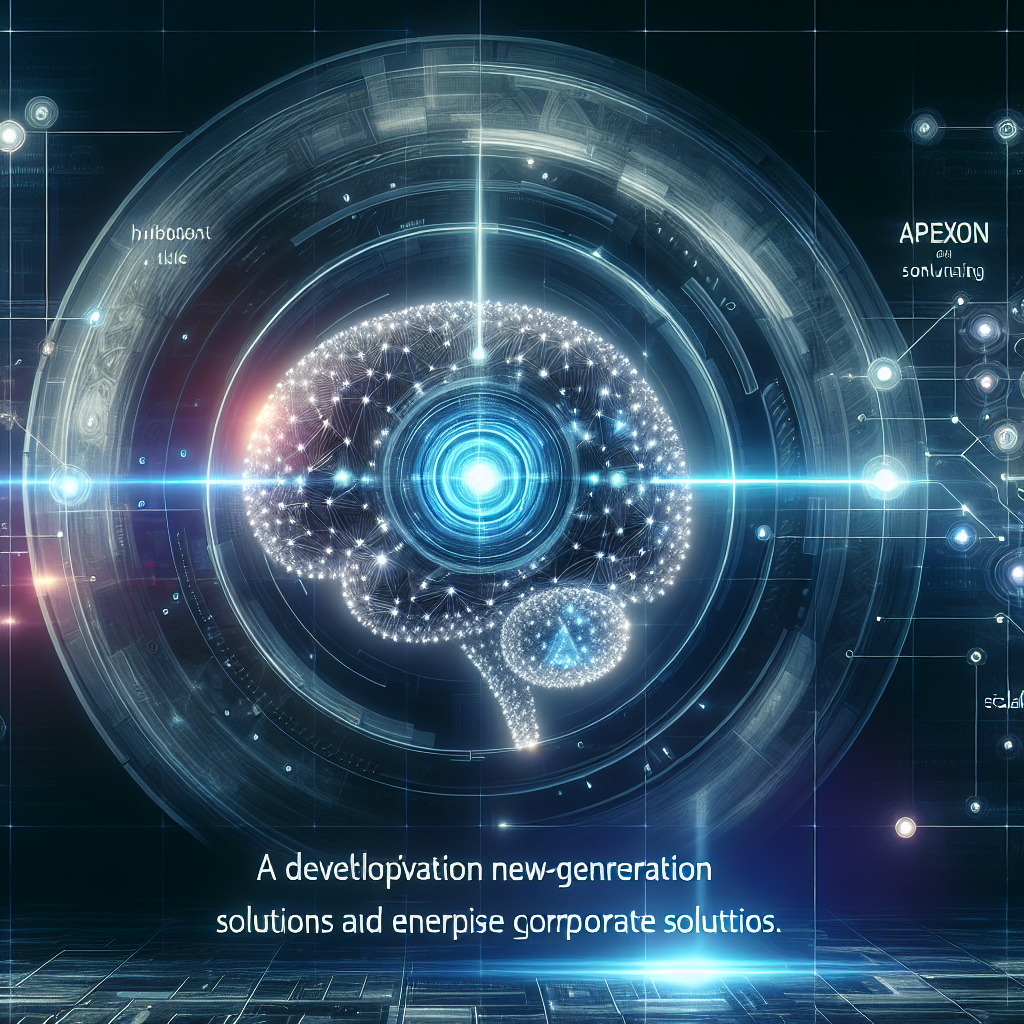-
ARM’s In-House AI Chip Pursuit Sees a Massive Breakthrough as the Firm Hires Amazon’s AI Chip Expert Responsible for Highly-Capable Trainium CPUs

ARM Holdings, a company renowned for its chip architecture, is embarking on an ambitious new journey to develop its own artificial intelligence (AI) chips. This strategic initiative has been dramatically reinforced by the recent hiring of Rami Sinno, a notable talent from Amazon who served as the AI chip director and played a crucial role in the development of Amazon’s high-performance ASICs, including the Trainium CPUs.
This move signals a pivotal shift in ARM’s operational approach. Traditionally, the company has focused on licensing its chip architecture to other firms, notably in the mobile and data center markets. However, as the explosive demand for AI technology continues, ARM’s CEO, Rene Haas, has indicated a proactive shift toward creating comprehensive AI solutions. The acquisition of Sinno is seen as a significant catalyst for this evolution, potentially positioning ARM to become a key player in the burgeoning market for AI processors.
With its core business model historically based on providing intellectual property rather than manufacturing chips, ARM faces challenges as it enters the competitive CPU arena. Yet, the company has a strong foundation; more than half of the data center market is already based on ARM architecture, primarily due to its collaboration with NVIDIA. NVIDIA’s support has put ARM in a favorable position to handle the complexities of CPU production, especially given the ongoing trend towards AI-powered solutions.
The backing of SoftBank Group, ARM’s parent company, is also integral to this strategy. SoftBank is known for its willingness to invest heavily in innovative yet risky ventures. This financial support could prove vital as ARM pursues its broadening ambitions in chip manufacturing, particularly in the competitive landscape against established giants such as Intel and AMD.
The competition in the AI chip market is fierce, and ARM’s foray into this domain comes with distinct advantages. The company’s collaboration with NVIDIA on their Grace CPUs provides a unique edge, allowing them to offer solutions specifically tailored for AI applications. This partnership promises to enhance ARM’s product range, making them a formidable contender in high-performance computing.
Rami Sinno’s expertise is an essential asset as ARM gears up for this new challenge. Under his leadership at Amazon, the development of Trainium and Inferentia chips demonstrated significant capabilities in machine learning and AI workloads, showcasing performance benchmarks that rival NVIDIA’s offerings. His insights into advanced chip design and architecture will be crucial for ARM as they aim to develop competitive products that meet the growing needs of AI technologies.
Looking ahead, the timeline for ARM’s new processors remains somewhat ambiguous. However, industry insiders speculate that with Sinno onboard and the infrastructure already in place, ARM’s first proprietary AI chip could debut sooner rather than later. Such a release would not only be pivotal for ARM but could also reshape the competitive dynamics within the CPU market as a whole.
The success of ARM’s new chips will depend on several factors, including integration with existing market technologies, scalability, and performance efficiency. As AI becomes an integral part of numerous industries ranging from automotive to finance, the demand for optimized AI processors is surging, presenting an excellent opportunity for ARM to capture market share and provide high-performance solutions.
In conclusion, ARM’s strategic pivot to create in-house AI chips presents an exciting chapter in its history and in the broader technology landscape. With the combination of strong leadership, strategic partnerships, and a pressing market demand for competitive AI solutions, ARM could become a significant player in this essential field. As developments unfold, the tech community awaits with great anticipation the innovations that ARM will bring to market.
-
Hugging Face: 5 ways enterprises can slash AI costs without sacrificing performance

In the rapidly evolving world of artificial intelligence, enterprises are often faced with the daunting challenge of managing the costs associated with computing power. As AI models increasingly demand substantial computational resources, businesses must urgently explore smarter approaches to harnessing these technologies. According to Sasha Luccioni, the AI and climate lead at Hugging Face, organizations do not necessarily need to chase after more computing power. Instead, they should focus on enhancing model performance and accuracy without incurring excessive costs.
Luccioni argues that a prevailing mindset within the industry is fixated on acquiring more FLOPS, GPUs, and time, an approach that may hinder innovation. She proposes that enterprises should explore underutilized strategies. By concentrating on computing smarter rather than harder, they can effectively reduce costs while improving efficiency. Luccioni emphasizes the importance of rethinking the conventional approach to AI deployment and instead prioritizing optimized practices to streamline operations.
To that end, she shares five pivotal insights from Hugging Face designed to assist enterprises in achieving AI cost-efficiency:
- Right-size the model to the task: One of the primary recommendations is to avoid defaulting to large, general-purpose AI models. Instead, organizations should consider task-specific or distilled models that can provide comparable—or even superior—accuracy at a fraction of the cost and energy consumption. Luccioni highlights her testing findings, revealing that task-specific models can utilize 20 to 30 times less energy than their general-purpose counterparts.
- Emphasize model distillation: In this context, model distillation plays a crucial role. By first training a model from scratch and then refining it for a specific task, organizations can effectively develop tailored solutions. For instance, while the DeepSeek R1 model represents substantial computational demand, distilled versions of models can be reduced in size, allowing them to function effectively on a single GPU.
- Utilize open-source models: Another key insight is the potential of open-source models to foster efficiency. These do not necessitate training from the ground up, allowing businesses to adapt existing models rather than waste resources developing something new. This shift towards leveraging pre-trained models enables companies to commence projects with a solid foundation and further refine them according to specialized needs.
- Foster incremental shared innovation: Beyond individual organizational benefits, the approach to utilizing open-source models encourages incremental shared innovation in the industry. By avoiding isolated training on unique datasets, companies can collectively enhance their models while limiting computational waste.
- Manage expectations in generative AI: Lastly, as many organizations grapple with the evolving landscape of generative AI, Luccioni emphasizes that costs may not always align with the perceived benefits. Generic applications like content generation may not provide the returns that businesses expect, necessitating a reconsideration of project viability.
The suggestions from Hugging Face serve as a timely reminder that amidst an expansive push for comprehensive AI solutions, there exists a crucial need for organizations to effectively manage their computational resources. It is possible to engage in AI transformation that aligns with both budgetary constraints and performance goals.
As businesses consider how to leverage these insights, they are invited to join exclusive salons that focus on creating sustainable AI systems while turning energy consumption into a strategic advantage. Opportunities to evaluate competitive ROI through efficient inference can pave the way for an organization to stay ahead in the field.
In conclusion, enterprises must recalibrate their approach to deploying AI technologies. By adopting these five strategies thus optimizing operational efficiency, businesses will not only enhance their competitive edge but also chart a sustainable path forward in an age where AI’s significance can only be expected to increase.
-
Yatra launches advanced AI travel assistant DIYA offering end-to-end travel planning

Yatra, a leading online travel company in India, has recently unveiled DIYA, an innovative travel assistant powered by generative artificial intelligence. This launch comes at a time when the travel industry is witnessing a major transformation, moving towards more personalized and efficient travel planning solutions. DIYA aims to streamline the travel experience, providing users with an end-to-end service in over 100 languages.
DIYA is not just another travel app; it is a robust platform that integrates multiple services into a single interface. According to Yatra, this advanced travel assistant enables users to create itineraries, book travel, and manage their trips seamlessly. The ability to do this in a multilingual environment caters to the diverse linguistic landscape of India, presenting a unique solution that is particularly relevant in today’s globalized travel market.
The AI-powered features of DIYA provide instant, 24/7 support to travelers. This means whether you’re crafting a complex travel itinerary or facing last-minute changes, DIYA is designed to assist users in real-time, addressing their queries and concerns in their preferred language. This level of support is a game-changer, highlighting how AI technology can enhance user experience in an industry that often faces significant challenges related to customer service and responsiveness.
As part of its features, DIYA goes beyond mere booking capabilities. Travelers can expect a comprehensive approach that encompasses everything from initial trip planning to post-booking management. This holistic focus ensures that users can remain stress-free, knowing they have access to guidance and assistance at any stage of their journey.
Manish Amin, co-founder and CTO of Yatra, emphasized the relevance of DIYA in today’s fast-paced travel environment. He stated, “With DIYA, our AI-powered travel assistant, travelers can plan, book, and manage trips with instant, intuitive, multilingual support, available 24/7. From crafting itineraries and booking journeys to handling last-minute changes in your preferred language, DIYA is built for the way India travels today — fast, personal, and multilingual.” This statement encapsulates the essence of the product: speed, personalization, and accessibility.
The launch of DIYA holds significant business implications, particularly in a competitive travel market that is increasingly reliant on technology-driven solutions. As travelers seek more intuitive and efficient methods for managing their trips, platforms like DIYA that leverage AI technology stand to gain a substantial market share. Moreover, the ability to cater to a multilingual audience opens new avenues for Yatra, positioning it favorably against competitors.
Travel agencies face the ongoing challenge of meeting diverse customer expectations while maintaining operational efficiency. Traditional travel planning often involves lengthy conversations, manual adjustments, and complex booking systems, which can frustrate travelers. DIYA’s capabilities address these issues directly, simplifying the travel planning process while enhancing customer satisfaction, thus resulting in increased loyalty and repeat business.
In conclusion, the introduction of DIYA marks a pivotal moment for Yatra as it seeks to redefine the travel planning experience for a new generation of travelers. By integrating generative AI into its offerings, Yatra is not only enhancing user engagement but also paving the way for future innovations within the sector. As the travel landscape evolves, solutions like DIYA will play an essential role in shaping how individuals approach planning their adventures, combining technology with personal touch for an optimal travel experience.
-
This CEO laid off nearly 80% of his staff because they refused to adopt AI fast enough. 2 years later, he says he’d do it again

In an era where artificial intelligence is rapidly reshaping the business landscape, Eric Vaughan, CEO of IgniteTech, stands out for a controversial decision he made in early 2023: laying off nearly 80% of his workforce. His rationale was simple yet profound— the potential of generative AI seemed to him an existential transformation, and his team was not moving fast enough to harness it. In an exclusive interview, Vaughan reflected on this dramatic shift, acknowledging the immense difficulty of such a decision while firmly maintaining that he would do it again.
The drastic measures Vaughan took were not merely about numbers; they represented a philosophical shift for the company. IgniteTech replaced hundreds of employees in an effort to fully embrace AI, as Vaughan noted that changing the mindset within the organization was tougher than simply adding new skills. The stark reality was this: for many companies, AI was not just a tool but a pivotal factor determining their survival in a rapidly changing market.
Reflecting on the urgency of this transition, Vaughan cited a critical moment in early 2023 when he recognized the imperative of AI adoption for all businesses, not just those in tech. He declared that every company faced an existential threat if they failed to adapt. This perspective led Vaughan to convene an all-hands meeting with his global remote team, where he made it clear that traditional workflows would no longer suffice.
Replacing comfortable routines with a singular focus on AI, Vaughan’s directive was bold: IgniteTech would dramatically invest in tools, education, and projects centered around AI. For his team, this meant everything had to revolve around artificial intelligence. According to Vaughan, the culture that needed to be built was predicated on embracing AI whole-heartedly. “We’re going to give a gift to each of you,” he remarked, signifying the commitment to transform the company through advanced training and learning initiatives.
Central to this transformation was the establishment of ‘AI Monday’, a recurring event where all employees could solely focus on AI projects—eliminating distractions like customer calls or other routine tasks. Vaughan emphasized this policy’s importance across all departments, from tech to sales and marketing. The structural change required an investment of 20% of IgniteTech’s payroll dedicated to mass learning initiatives, designed to enhance AI competency within the organization.
However, the ambitious plans met significant resistance, especially from the technical staff. Contrary to expectations, it was the more tech-savvy employees who displayed skepticism, voicing concerns about AI’s limitations instead of embracing its possibilities. As Vaughan recounted, there were instances of outright defiance, which ultimately led his team to part ways with those unwilling to adapt to the AI-driven vision.
This poignant story highlights the often-overlooked challenges of fostering change within a company. Vaughan’s experience underscores that the human element—belief and willingness to adopt new norms—is critical to successfully implementing any technological transformation. The situation at IgniteTech serves as a case study for business leaders navigating their paths into AI adoption, illustrating that while the technology may be powerful, the real struggle lies in achieving buy-in from the workforce.
Amidst the disruption, Vaughan proposes a broader lesson for industries across the board: companies that resist the seismic shift of AI face dire consequences, while those who adapt can leverage unprecedented advantages. IgniteTech’s trajectory exemplifies not only the potential risk of stagnation but also the opportunities emerging for businesses prepared to evolve.
This narrative rings true, especially in our current climate where technology is changing at an unprecedented pace. Leaders must recognize that the proactive embrace of AI might be essential for survival; it might even define the next generation of successful enterprises. As for Vaughan, he remains resolute about his path and encourages other leaders to seriously consider the implications of AI, not just as a tool, but as a core element of their business strategy.
-
AI May Soon Detect Laryngeal Cancer Just by Listening to Your Voice

Voice has long been recognized as a unique identifier for individuals, much like a fingerprint. Recent advancements in artificial intelligence (AI) suggest that our voices might also serve a crucial role in the early diagnosis of laryngeal cancer, a rare yet potentially deadly disease. A groundbreaking study conducted by researchers at the Department of Clinical Epidemiology at Oregon Health and Science University has demonstrated the potential of AI to detect abnormalities in vocal folds through the analysis of vocal recordings.
Laryngeal cancer, which originates in the voice box, affected approximately 200,000 people globally in 2021. Its survival rates greatly depend on the timeliness of detection and the context of treatment, with five-year survival rates varying from 35 to 75 percent. Risk factors include smoking, heavy alcohol consumption, and infections like human papillomavirus (HPV). The need for effective early detection methods is pressing, particularly since traditional methods can be invasive or require specialized tools and expertise.
The research team analyzed a total of 12,523 voice recordings from 306 individuals, utilizing the Bridge2AI-Voice dataset. This dataset encompasses recordings from both healthy individuals and those diagnosed with laryngeal cancer or other vocal fold issues. By examining subtle acoustic features, such as fundamental frequency, jitter, shimmer, and the harmonic-to-noise ratio, the team sought to identify distinctive patterns that could signal early signs of cancer.
One of the study’s most striking findings was the increased harmonic-to-noise ratio and pitch disparities among male subjects with healthy voices, benign lesions, and laryngeal cancer. Notably, the researchers observed that similar patterns in women’s voices were less pronounced, indicating that further research and larger datasets may be required to draw definitive conclusions for females.
This research falls under the ambit of the Bridge2AI-Voice project, part of a broader national initiative by the U.S. National Institutes of Health to harness AI solutions for complex biomedical problems. The ability to detect laryngeal cancer through voice analysis could revolutionize early diagnosis and treatment, boosting survival rates and enhancing patients’ quality of life. By utilizing non-invasive methods, this innovative approach offers a more accessible alternative to traditional testing procedures and may pave the way for further studies in the intersection of AI and healthcare.
In conclusion, the application of AI in detecting laryngeal cancer by simply listening to an individual’s voice represents an exciting frontier in medical diagnostics. As more research unfolds and technology advances, the potential for AI to improve early cancer detection holds promise for a range of diseases beyond laryngeal cancer, particularly through the analysis of other vocal attributes. If successfully developed and implemented, this novel method could represent a transformative step forward in healthcare, making it more proactive and patient-friendly.
-
Apexon and Aisera Forge Strategic Partnership to Deliver Next-Generation Agentic AI Solutions for Enterprises

In a transformative move set to reshape the landscape of enterprise operations, Apexon and Aisera have forged a strategic partnership aimed at delivering next-generation agentic AI solutions. This collaboration, which was officially announced on August 14, 2025, signifies a bold step towards redefining how businesses engage with artificial intelligence in their operational processes. The partnership combines Apexon’s deep expertise in data transformation with Aisera’s cutting-edge agentic AI platform, paving the way for organizations to enhance their autonomous operational capabilities.
The synergy of these two organizations is poised to help enterprises escape the limitations of fragmented and reactive workflows. By embracing intelligent, autonomous agents, businesses can expect to see significant improvements in efficiency and decision-making. These agents are designed to proactively act on real-time data, orchestrate complex processes, and ultimately drive substantial business outcomes across various operational facets, including IT and business operations.
Initially, the partnership will focus on high-impact sectors, including high tech, insurance, claims management, and energy and utilities. In these industries, intelligent automation coupled with data-driven operations can unlock unprecedented value and expedite the journey of digital transformation. By targeting these sectors, Apexon and Aisera are tapping into crucial areas where the potential for operational enhancement is not only vast but also imperative for maintaining competitiveness.
Apexon, known for its decades of experience in modernizing enterprise data ecosystems, brings a wealth of knowledge to the table. The firm is adept at ensuring seamless integration across both legacy and cloud environments, optimizing data pipelines, and maintaining the availability of AI-ready data at scale. Their strong foundation in platform engineering and architecture design supports the scalable deployment of agentic systems, which are integral for the success of this partnership. Furthermore, Apexon’s integration accelerators and domain-specific frameworks will enable rapid implementation across various industries, thereby speeding up the transformative benefits.
Complementing this, Aisera contributes its advanced capabilities in AIOps and AI for IT service management. The Aisera platform is equipped with features such as real-time telemetry, predictive remediation, and automation of service requests from end to end. This comprehensive approach to automation can significantly reduce ticket volumes and enhance service efficiency, leading to an overall improvement in employee experiences. The built-in connectors to widely used systems such as ServiceNow, Jira, and BMC facilitate quick deployment, which allows businesses to see immediate impacts from their investments in the technology.
A pivotal highlight of their partnership is the introduction of Apexon’s next-generation platform, AgentRise. Designed with the goal of embedding agentic AI throughout the digital core of enterprises, AgentRise aims to deliver industry-specific intelligent agents that integrate seamlessly into enterprise systems, data workflows, and business processes. This innovative technology is set to encourage autonomous decision-making, driving meaningful business outcomes in a rapidly changing digital landscape.
According to Mukund Kalmanker, Global Head of Data, Analytics, and AI Practice at Apexon, the partnership is built upon a shared vision to help enterprises fully leverage Generative AI and Agentic AI. By combining Aisera’s strengths in intelligent automation with Apexon’s depth in data and AI engineering, organizations can move beyond mere experimentation to realize enterprise-wide impacts. This cooperative effort will facilitate environments where intelligent agents are capable of making decisions autonomously, orchestrating complex processes, and delivering measurable business value.
This partnership between Apexon and Aisera underscores the increasing significance of AI solutions in today’s business landscape. As companies strive to become more intelligent and agile in their operations, harnessing the power of agentic AI will be crucial to remaining competitive. With the goal of transforming how business operations are conducted, the launch of this collaboration may well signal a new era of operational efficiency and innovation.
-
Dell, Nvidia, Elastic Partner On AI Data Platform

The intersection of data and artificial intelligence (AI) is increasingly shaping the future of various industries, with companies seeking more effective ways to harness their data assets. In a significant move, Dell Technologies has announced a collaboration with Nvidia and Elastic to create an innovative AI Data Platform intended to streamline the deployment and scalability of AI applications across domains such as media, entertainment, and financial services.
According to Vrashank Jain, lead product manager for the AI Data Platform at Dell, this new initiative is built for a paradigm wherein data is viewed as an invaluable commodity. The platform aims to dismantle persistent data silos that often impede the seamless flow of information within organizations. By doing so, it strives to accelerate production pipelines, thereby facilitating richer AI experiences that can empower users and enhance decision-making capabilities.
At the heart of this AI Data Platform are Dell’s PowerEdge R7725 servers, equipped with the formidable Nvidia RTX PRO 6000 Blackwell Server Edition GPUs. This hardware configuration promises high performance packaged within a universal 2U rack format that caters to enterprise, industrial, and advanced visual workloads. The combination of Dell’s hardware and Nvidia’s powerful GPUs sets the stage for unparalleled processing capabilities, crucial for handling the demands of modern AI applications.
Integral to the platform is Elastic’s Elasticsearch, which empowers users to leverage natural language and vector database search functionalities. This innovative feature allows content editors to efficiently locate scenes without the tedious task of sifting through an abundance of folders. Such efficiency is vital in industries where time-sensitive data retrieval can significantly impact productivity.
Furthermore, with Nvidia’s Omniverse libraries and AI models like USD Search, the platform extends its capabilities to provide context-aware searches tailored for intricate 3D asset libraries. This addition enhances the user experience by making asset discovery more intuitive, thus elevating the standards of content creation and management.
As we move towards an increasingly data-driven world, the expectation for real-time, low-latency applications is at an all-time high. Dell asserts that their AI Data Platform is designed to meet this demand, improving processing speeds as well as the efficiency of communication and storage. This is particularly significant for industries focused on media production and banking, where milliseconds can make a considerable difference.
The collaboration between Dell, Nvidia, and Elastic is a testament to the growing importance of partnerships in AI development and implementation. By integrating premier hardware and software solutions, the companies aim to not only enhance operational capabilities but also drive innovation across industries. As businesses look to capitalize on their data, the need for advanced AI platforms such as this one will only become more pronounced.
In summary, the strategic alliance between Dell, Nvidia, and Elastic represents a significant advancement in AI technology that caters directly to the needs of various sectors. By breaking down barriers to data access and providing powerful processing capabilities, the AI Data Platform positions itself as a cutting-edge solution for organizations striving to remain competitive in a rapidly evolving landscape.
-
Perplexity Brings Live Indian Stock Market Data To Its AI Platform

In a significant move that showcases the growing integration of artificial intelligence in financial services, Perplexity has announced the expansion of its finance coverage to the Indian equity markets. This latest development aims to enhance its offerings in a region that is increasingly drawing attention from global investors and technology firms alike.
Perplexity, known for its AI-powered search capabilities, is enhancing its platform by providing users with access to real-time stock prices, news, and updates derived from two of India’s largest stock exchanges, the Bombay Stock Exchange (BSE) and the National Stock Exchange (NSE). This addition is not merely about delivering basic stock information; it represents a strategic initiative to deepen Perplexity’s foothold in the fast-evolving Indian market.
Beyond just delivering live market data, Perplexity Finance stands out by offering in-depth explanations of unusual price movements. For instance, users can gain insights into the factors driving significant swings in stock prices, both upwards and downwards. This analytical approach equips investors with valuable context that can inform their trading decisions, particularly beneficial for those who might be unfamiliar with the nuances of the Indian market.
The platform doesn’t stop there; it also outlines potential bull and bear cases for key stocks, giving investors a balanced view of the market landscape. This feature, which interprets the potential future performance of stocks under varying economic scenarios, can be crucial for investors looking to navigate the complexities of stock trading amidst fluctuating market conditions.
Furthermore, Perplexity Finance provides access to comprehensive company financials and downloadable historical data, enabling users to conduct detailed analyses without incurring costs often associated with financial market data services. This democratization of access to information is a competitive advantage for Perplexity, especially as many of its competitors tend to place their detailed analytical tools behind paywalls.
The accessibility provided by Perplexity aligns well with the current trend towards increasing transparency in financial markets. By offering a suite of analytical tools and real-time information for free, Perplexity is likely to attract a wider audience, including not only experienced traders but also novice investors interested in making informed decisions rapidly.
This expansion also highlights the competitive landscape in the financial technology sector, where companies are continuously vying to provide unique offerings that resonate with users. As India continues to emerge as a significant player in global finance, platforms that cater to local needs while leveraging advanced technologies like AI will likely find themselves at a comparative advantage.
As the investment landscape in India grows more dynamic, the addition of services like those offered by Perplexity can help bridge the information gap. Users now have the opportunity to access timely coverage of the stock market directly through an AI-driven lens, which can assist in better decision-making around investments. The potential for increased participation in the stock market could lead to a broader engagement with financial literacy as individuals learn to interpret stock information through Perplexity’s detailed reporting.
In conclusion, Perplexity’s expansion into the Indian stock market represents a significant leap forward in the application of AI in finance. By providing accessible, real-time data, insights into market movements, and a suite of analytical tools, they are not just enhancing user experience but potentially reshaping how individuals engage with equities in a burgeoning market. As this trend continues, business leaders and investors will need to stay attuned to these developments, leveraging such tools to maintain a competitive edge in their strategies.
-
If you have one of these Galaxy phones, you can receive six free months of powerful AI tools

The rapid evolution of artificial intelligence tools has sparked excitement and intrigue in the technology community. Owners of select Galaxy smartphones are about to revel in an extraordinary opportunity as Samsung rolls out a promotional offer for six free months of Google AI One Pro. This offer represents not only a savvy marketing move by Samsung but also serves as a substantial value-add for Galaxy users looking to enhance their digital experiences with cutting-edge AI capabilities.
Last month, Google introduced the concept of an AI subscription model for Pixel 9 users, allowing them to access the innovative Veo 3 AI video generation model for an entire year at no cost. With Veo 3, users can simply input imaginative requests—such as “Make me a video of a giant baby climbing the Empire State Building”—and receive an eight-second, high-quality video based on their prompt. This also marks a significant leap forward in AI-driven video technology, enabling users to create unique content at their fingertips.
But the perks don’t stop there. Along with the one-year subscription to Veo 3, consumers can also tap into other powerful tools such as Gemini’s 2.5 Pro, an advanced movie creation tool called Flow, and integration with Gemini in Workspace applications. Coupled with 2TB of cloud storage, this offer positions itself as a comprehensive package for creative users looking to maximize productivity and innovative output.
Samsung’s strategic offer aims to entice Galaxy phone users with powerful creative tools tailored for digital content creation. Eligible Galaxy handset owners can now take advantage of six months of Google AI One Pro, which encompasses access to the same AI tools launched for Pixel users, thus leveling the playing field. There’s a big difference between Veo 3 and Flow: while Veo 3 generates short clips, Flow takes those clips and allows users to string them together into longer narratives, thus enhancing the storytelling aspect of digital content creation.
Once the promotional period ends, users will be able to access these AI tools for a standard monthly fee of $19.99 or an annual subscription priced at $199.99. Given the innovative nature of these AI tools, the pricing reflects a competitive market rate while outlining the potential long-term value they bring to users. Samsung clearly recognizes the desires of consumer audiences—especially those drawn to content creation—and is using this collaboration with Google to enhance user engagement, thereby driving sales and loyalty among Galaxy users.
You might be wondering if this offer applies to your device. It is relatively straightforward to find out. Interested Galaxy smartphone owners simply need to download the Google One app from the Play Store. Upon installation, opening the app with an eligible Galaxy device will prompt the offer, making it easy for users to dive into the world of AI-enhanced creativity.
The launch of this promotion aligns with the growing trend of utilizing advanced technology to enhance productivity and creativity in everyday life. As AI continues its rapid advancements, promotions like this from Samsung serve not only as an enticing opportunity for users but also as a clear indication of market trends—we will continue to see more integrations of such tools across different platforms.
It is also noteworthy to mention that Samsung is focusing on its recently released foldable devices, the Galaxy Z Fold 7 and Galaxy Z Flip 7. These devices offer unique multitasking capabilities that align perfectly with the use of AI tools, potentially transforming how users create and share content. Thus, Samsung is making a strong case for why their foldables are a great fit for tech-savvy consumers looking for flexibility and innovation.
This offering by Samsung is a reminder of the dynamic and rapidly advancing landscape of technology, where consumers are becoming empowered through tools that once seemed only available to large production companies. With emerging AI technologies, like those offered in this promotion, users can now express their creativity and bring their innovative ideas to life more effortlessly than ever before.
-
MIT startup offers AI app to help police fight crime

In an age where technology is continuously transforming various sectors, law enforcement is not left behind. A startup hailing from MIT, Multitude Insights, is pioneering a novel approach to crime reporting and analysis through their innovative AI application. This software aims to replace outdated methods of crime bulletins, such as faxed documents and printed copies, with a digital system that enhances efficiency and maximizes the potential for catching criminals.
The core functionality of Multitude’s application allows detectives and officers to easily create and disseminate crime bulletins online using a user-friendly digital template. This significant adaptation ensures that critical information can be shared rapidly not only within the department but also across many agencies and even the public. Already, police departments in cities like Boston, Brookline, and Watertown have participated in pilot programs, showcasing the app’s potential across various jurisdictions.
At the heart of this initiative is the desire to foster connectivity between disparate criminal incidents. By leveraging artificial intelligence, the application analyzes multiple crime reports from different locations—in some cases even spanning multiple states. This deeper analysis can identify patterns in criminal activity, such as the involvement of the same vehicle in various thefts or repeating methods of operation across crime scenes. Ultimately, the AI creates links between incidents, granting law enforcement the ability to see the bigger picture and possibly apprehend suspects more effectively.
Matt White, cofounder and CEO of Multitude Insights, emphasizes the chaos that can ensue within large law enforcement agencies where different units may not communicate effectively. By converting a traditionally disjointed process into a searchable, usable database, Multitude aims to ensure that all departments involved can share vital information seamlessly. The AI-driven component takes this a step further by alerting officers if a crime from one department ties to another, promoting collaboration rather than compartmentalization.
Through real-world applications, Multitude’s software has already demonstrated its capabilities. One example cited by White involved connecting the dots between incidents linked to a domestic terrorist group, enabling different agencies to pool their findings based on the destruction of weather radars. Another showcase involved identifying a credit card thief in California through a unique clue: the baseball cap the suspect was wearing during multiple thefts.
The process for law enforcement officers using the app is designed for swift operation. Officers can select crime types from drop-down menus, provide additional details, and upload multimedia content, all in a matter of minutes. This not only encourages faster reporting but also allows for real-time collaboration, as fellow officers can leave comments or tips directly within each bulletin. This interactivity enhances community engagement, encouraging a supportive environment for information sharing.
However, despite the promising feedback surrounding Multitude’s application, police departments involved in trials have generally been reticent to share their experiences publicly. This silence raises questions about the robustness of implementation and firsthand efficacy, critical factors for potential customers considering adopting the software.
As the startup progresses, several broader implications for the law enforcement landscape arise. The rise of AI in police work suggests a future where departments can act more cohesively, set aside bureaucratic challenges, and tap into shared knowledge and resources. Moreover, it presents a clear business value in the realm of public safety, which can be paramount as cities face rising crime rates.
The future of crime fighting may very well depend on technology that can keep pace with the evolving nature of criminal activity. Multitude Insights exemplifies a forward-thinking approach — one that provides law enforcement agencies with tools essential for the 21st century. By moving away from antiquated methods and adopting comprehensive AI solutions, police departments could unlock a new level of success in both preventing and solving crime.
